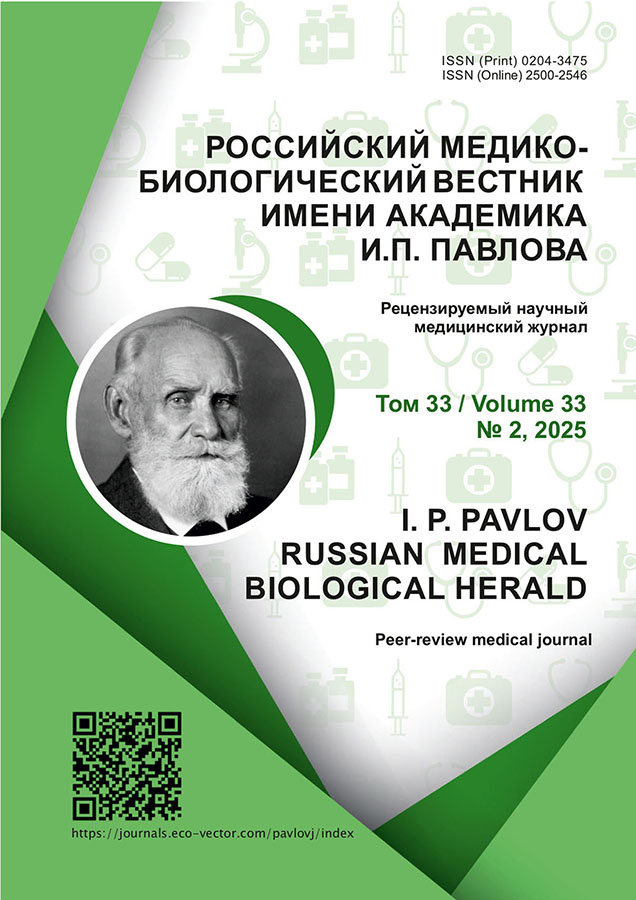Assessment of Marathon and Ultramarathon Athletes’ Awareness of Their Dental Health Based on a Survey
- Authors: Okhotnikova O.S.1, Shakaryants A.A.1, Zakharova K.E.1, Dorofeev A.E.1
-
Affiliations:
- I.M. Sechenov First Moscow State Medical University (Sechenovskiy University)
- Issue: Vol 33, No 2 (2025)
- Pages: 181-186
- Section: Original study
- Submitted: 04.02.2024
- Accepted: 25.07.2024
- Published: 02.07.2025
- URL: https://journals.eco-vector.com/pavlovj/article/view/626486
- DOI: https://doi.org/10.17816/PAVLOVJ626486
- EDN: https://elibrary.ru/YJWRAM
- ID: 626486
Cite item
Abstract
INTRODUCTION: Developing aerobic potentials over long and ultra-long distances requires considerable physiological resources of a human organism. High physical loads intensified by emotional stress associated with the competition factor, is an integral part of such competitions as marathons and ultramarathons. Poor dental health of athletes can negatively affect training, performance and well-being both in everyday life, and in the period of training and competitions. In this regard, dental diseases can have a negative impact on the performance of track and field athletes.
AIM: To assess the awareness of marathon and ultramarathon athletes of their dental health on the basis of a survey and to elucidate factors in their sports activity having the greatest impact on the level of oral hygiene.
MATERIALS AND METHODS: Forty amateur athletes engaged in long distance running, were surveyed. The athletes had different level of training and had been engaged in long-distance running for more than a year. The survey was conducted using the ‘Program for assessing the dental status of marathon and ultramarathon athletes.’ This program includes a number of questions about awareness of a person of his oral health, cariogenic factors and the need for dental treatment, as well as about athletic achievements, the type of nutrition during the preparatory and competitive periods.
RESULTS: The greatest effect on the level of oral hygiene of athletes was found to be produced by the training volume per month. With training volume from 251 to 300 kilometers per month, the oral hygiene level was low in 42.9% of respondents. With this parameter values from 351 km to 400 kilometers per month the hygiene level was low in 100.0% of cases.
CONCLUSION: When assessing the awareness of marathon athletes of their own dental health, it was found that most athletes do not associate the level of oral hygiene with the quality of life and results in long-distance competitions. Anthropometric data, oral hygiene products and methods used by respondents at home did not have a statistically significant effect on the level of oral hygiene. The greatest negative effect on the level of oral hygiene of marathon athletes is produced by an increase in the training volume per month.
Full Text
About the authors
Olga S. Okhotnikova
I.M. Sechenov First Moscow State Medical University (Sechenovskiy University)
Author for correspondence.
Email: ohotnikovaolga07@gmail.com
ORCID iD: 0009-0009-6394-7385
SPIN-code: 3025-3624
Russian Federation, Moscow
Alla A. Shakaryants
I.M. Sechenov First Moscow State Medical University (Sechenovskiy University)
Email: davidyants_a_a@staff.sechenov.ru
ORCID iD: 0000-0002-5298-5767
SPIN-code: 2997-8173
MD, Cand. Sci. (Medicine), Assistant Professor
Russian Federation, MoscowKsenia E. Zakharova
I.M. Sechenov First Moscow State Medical University (Sechenovskiy University)
Email: zakharova_k_e@staff.sechenov.ru
ORCID iD: 0000-0002-5840-2972
SPIN-code: 2064-4711
MD, Cand. Sci. (Medicine)
Russian Federation, MoscowAleksey E. Dorofeev
I.M. Sechenov First Moscow State Medical University (Sechenovskiy University)
Email: aedorofeev@mail.ru
ORCID iD: 0000-0002-0815-4472
SPIN-code: 9897-2063
MD, Cand. Sci. (Medicine), Assistant Professor
Russian Federation, MoscowReferences
- Aikin VA, Koryagina JuV. Current trends in physiology of the long and ultra-long distances running (foreign experience). Uchenye Zapiski Universiteta imeni P.F. Lesgafta. 2014;(7):7–14. EDN: QNSVPX
- De Pero R, Cibelli G, Cortis C, et al. Stress related changes during TeamGym competition. J Sports Med Phys Fitness. 2016;56(5):639–647.
- Babaev EE, Mamedov FYu. Alternative methods of treatment of periodontal disease on the background of overtraining. Russian Journal of Dentistry. 2014;18(1):24–27. doi: 10.17816/dent.39231 EDN: RZEDVT
- Ponomareva AG, Kostyuk ZM, Krivoshchapov MV, et al. The methods of molecular diagnostics for the elucidation of specific features of oral cavity pathology in the athletes. Russian Journal of Stomatology. 2014;7(2):47–49. EDN: SVKKTL
- Svendsen IS, Killer SC, Carter JM, et al. Impact of intensified training and carbohydrate supplementation on immunity and markers of over-reaching in highly trained cyclists. Eur J Appl Physiol. 2016;116(5):867–877. doi: 10.1007/s00421-016-3340-z EDN: PASEEI
- Marks L, Fernandez C, Kaschke I, et al. Oral cleanliness and gingival health among Special Olympics athletes in Europe and Eurasia. Med Oral Patol Oral Cir Bucal. 2015;20(5):e591–e597. doi: 10.4317/medoral.20396
- Ramagoni NK, Singamaneni VK, Rao SR, et al. Sports Dentistry: a Review. J Int Soc Prev Community Dent. 2014;4(S3):S139–S146. doi: 10.4103/2231-0762.149019
- Azeredo FN, Guimarães LS, Luís W, et al. Estimated prevalence of dental caries in athletes: An epidemiological systematic review and meta-analysis. Indian J Dent Res. 2020;31(2):297–304. doi: 10.4103/ijdr.ijdr_764_18 EDN: NPTGXF
- Maruyama Y, Seki T, Ando S, et al. Analysis of IGHA1 and other salivary proteins post half marathon in female participants. PeerJ. 2023;(11):e15075. doi: 10.7717/peerj.15075 EDN: DLIPAX
- Certificate of State registration of a computer program RU No. 2023683226. 03.11.2023. Byul. No. 11. Gus'kov AV, Okhotnikova OS, Dorofeyev AYE, et al. Programma dlya otsenki stomatologicheskogo statusa sportsmenov–marafontsev i ul'tramarafontsev. EDN: QZPDII
- Knapik JJ, Marshall SW, Lee RB, et al. Mouthguards in sport activities: history, physical properties and injury prevention effectiveness. Sports Med. 2007;37(2):117–144. doi: 10.2165/00007256-200737020-00003
- ADA Council on Access, Prevention and Interprofessional Relations; ADA Council on Scientific Affairs. Using mouthguards to reduce the incidence and severity of sports-related oral injuries. J Am Dent Assoc. 2006;137(12):1712–1720; quiz 1731. doi: 10.14219/jada.archive.2006.0118
- Ranalli DN. Sports dentistry and dental traumatology. Dent Traumatol. 2002;18(5):231–236. doi: 10.1034/j.1600-9657.2002.00122.x
- Needleman I, Ashley P, Fine P, et al. Oral health and elite sport performance. Br J Sports Med. 2015;49(1):3–6. doi: 10.1136/bjsports-2014-093804
- Sambunjak D, Nickerson JW, Poklepovic T, et al. Flossing for the management of periodontal diseases and dental caries in adults. Cochrane Database Syst Rev. 2011;(12):CD008829. doi: 10.1002/14651858.cd008829.pub2 Update in: Cochrane Database Syst Rev. 2019;4:CD008829. doi: 10.1002/14651858.CD008829.pub3
Supplementary files











